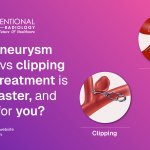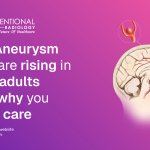Introduction- What is Uterine Artery Embolization?
Uterine Artery Embolization (UAE) has become a cutting-edge therapy for many uterine diseases in medical progress. UAE has changed women’s healthcare landscape by addressing problems like fibroids, adenomyosis, Uterine AVM and Post Partum hemorrhage. This in-depth manual explores the history of UAE, its uses, advantages, and how this minimally invasive surgery promotes the well-being of women.
The Genesis of Uterine Artery Embolization
UAE, or uterine artery embolization, started to become more common at the beginning of the 1990s. The treatment was made to be a less painful alternative to invasive surgeries like hysterectomy and myomectomy. UAE was made to treat uterine fibroids, harmless growths starting in the uterus. Most of the time, these growths lead to painful, uncomfortable, and too much menstrual flow. UAE’s attention grew to include adenomyosis, another uterus problem caused by the spread of endometrial tissue into the uterine wall. Uterine AVM (Arteriovenous Malformations) in which arteries and veins get directly connected through weak point which can leak and patient will have massive bleeding similarly in post partum hemorrhage where patient can have massive bleeding during or immediately after delivery of baby.
An Examination of Conditions Treated by Uterine Artery Embolization (UAE)
The groundbreaking, minimally invasive Uterine Artery Embolization (UAE) surgery has emerged as a ray of hope for women with various uterine problems. This pioneering treatment, sometimes described as a non-surgical substitute for hysterectomy, has shown to be very effective in treating several disorders. This article delves into the UAE and examines the illnesses successfully treated there, ushering in a new age for women’s health.
1. Uterine Fibroids
Uterine fibroids, benign uterine growths, may cause uncomfortable and painful pelvic pain and excessive monthly flow. UAE provides an appealing remedy by cutting off the blood flow to these fibroids, which eventually causes them to contract. Using a non-invasive way keeps the uterus and lessens the painful symptoms that fibroids can cause.
2. Adenomyosis
Adenomyosis is a disorder that causes an enlarged uterus, intense discomfort, and heavy periods when the uterine lining develops into the muscle wall. UAE successfully alleviates the symptoms by attacking the blood vessels supplying aberrant tissue. Women who previously had to consider having a hysterectomy may now choose the UAE and keep their fertility and quality of life intact.
3. Postpartum Hemorrhage
Excessive bleeding after delivery, or postpartum hemorrhage, is a severe medical issue. By stopping the increased blood flow, UAE provides a quick fix and avoids the need for invasive surgical treatments. The mother’s safety is guaranteed by this life-saving intervention, which also eliminates the need for more drastic measures.
4. Gynecologic Bleeding / Uterine AVM
Uterine AVM & many other numerous gynecological diseases may result in excessive or irregular uterine bleeding. By cutting off the blood flow to troublesome locations, the UAE is a flexible method of controlling and minimizing irregular bleeding patterns.
The Advantages of UAE Treatment
UAE’s popularity is due to the several advantages that make it a desirable choice for women looking for treatment for uterine conditions:
Minimally Invasive-
UAE is a minimally invasive technique that does not need significant surgery. This equates to faster healing periods, less discomfort, and a lesser chance of problems when compared to conventional surgical methods.
Uterus Preservation-
The capacity of the UAE to maintain the uterus is one of its most incredible benefits. UAE provides a viable alternative for women who want to save their fertility or avoid a hysterectomy’s adverse psychological and physical effects.
Nonsurgical Alternative-
UAE does away with the necessity for invasive surgical procedures, which lowers the dangers of conventional surgery, including infection, bleeding, and extended hospital stays
Quick Recovery-
Compared to surgical treatments, patients who undergo UAE often report a speedier recovery time. Many women may return to their regular activities in a short amount of time.
Symptoms Relief-
Uterine fibroids and adenomyosis symptoms like heavy bleeding, pain, and discomfort are effectively treated by UAE. After the surgery, patients often note a dramatic improvement in their quality of life.
Future Pregnancy-
Women who want to become pregnant may still have children in the UAE. In contrast to hysterectomy, which ultimately destroys the uterus, UAE permits bringing a pregnancy to term.
Recognizing the UAE Process
UAE employs a thorough and focused strategy to reduce or eliminate distressing abnormal growths. An interventional radiologist, a doctor with experience utilizing medical imaging to direct operations, often performs the procedure. Here’s a summary of how the UAE method works:
Preparation:
The patient is assessed before the surgery to ensure UAE is an appropriate treatment choice. To see the uterine state, imaging procedures like ultrasounds, MRIs, or CT scans are used.
2. Anesthesia:
UAE is carried out under local anesthetic, which keeps the patient awake but prevents them from feeling any discomfort.
3. Catheterization with Guidance:
In the groin region, a tiny hole is made, and a thin tube catheter is introduced into the uterine arteries. The catheter is guided using X-ray imaging to get to the arteries, giving blood to the fibroids or afflicted regions.
4. Embolization:
Through the catheter, tiny particles, often consisting of a substance known as polyvinyl alcohol (PVA) or tris-acryl gelatin microspheres (TAGM), are injected into the uterine arteries. These particles impede the blood flow to the fibroids or adenomyosis, causing them to decrease over time.
5. Recovery:
Patients are followed up for a few hours after the treatment to ensure their condition has stabilized. Most women can go home the same day; however, some may endure minor pain, cramping, or spotting while their bodies recover.
6. Results:
The targeted fibroids or adenomyosis go through natural shrinking over the next weeks and months. Patients often notice a major improvement in their general well-being as symptoms progressively disappear.
Conclusion
The uterine artery embolization (UAE) procedure provided by the IR Clinic is a notable development in women’s health care. From its beginnings as a cutting-edge substitute for surgical procedures to its widespread use in the treatment of uterine fibroids adenomyosis, Uterine AVM and PPH the UAE provides various advantages that improve women’s quality of life. UAE enables women to take charge of their health and well-being since it is a minimally invasive process that protects fertility, guarantees quick recovery, and efficiently reduces symptoms. UAE continues to be a ray of hope for women seeking alleviation from uterine disorders while protecting their reproductive potential and general health as medical research develops.















